Chengdu1 is the capital of Sichuan and the 4th largest city in China. The 14 million inhabitants for a European sounds frightening, yet the streets are clean, the smog is not too bad and the roads are surprisingly airy.
We chose this city because there is a KLM flight from Heathrow ( change at Schipol, Amsterdam ), and it "only" takes 12 hours all together. And only 3 hours of this is above Europe! By the way, KLM is brilliant for long flights. The food is good, the standard economy seat size is tolerable and the entertainment system has some quite new films.
At the airport a smiling man approached us with some words of English knowledge if we need a taxi. We did, so we accepted a bargain to bring us to our hotel - not taking the advice to use only the real taxies. We became pretty nervous when after about 2 minutes of driving he asked us to change to a different car. I immediately started tracing our route if we were going towards the correct directions of the hotel, but it all turned out to be OK; we reached the hotel and everyone was happy. I'd still recommend taking the an official taxi instead, they are easy to spot.
The traffic is shocking. Not because of the jams or the amount of cars, no. Shocking because of its randomness, its chaotic dance, where everyone is going at the same time to all the possible directions - but even in this chaos I did not see a single accident, nor a serious traffic jam. Flow with the others, that'll help. All the scooters we saw in Chendgu were electrical, so no sound, no smell, but do get used to the "hey, I'm here" type honks. Scooters and bicycles are technically pedestrians; and cars always go first. They are stronger.
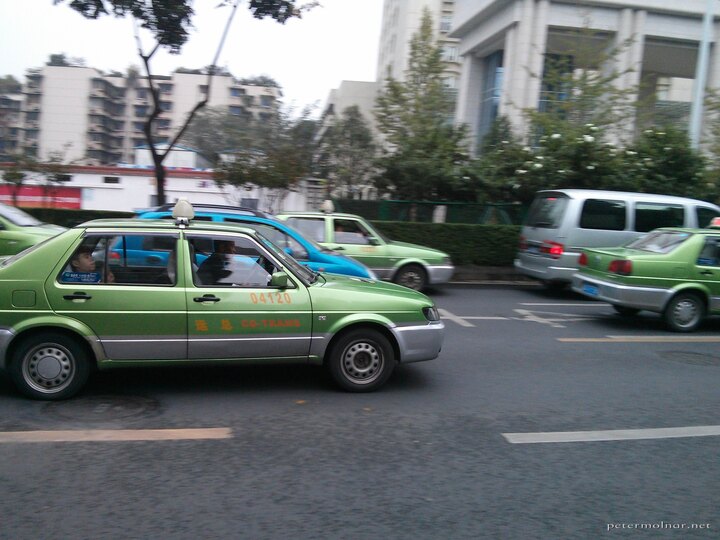
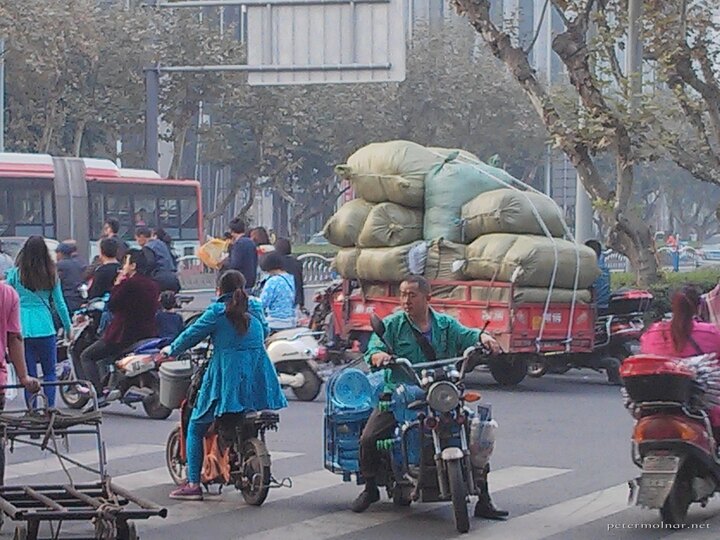
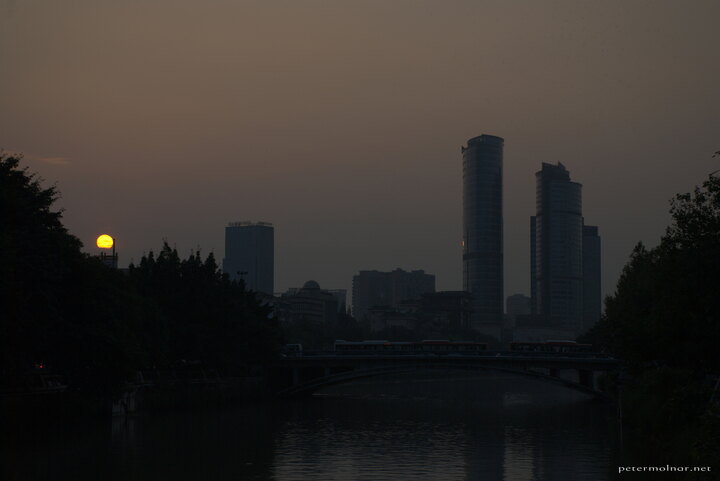
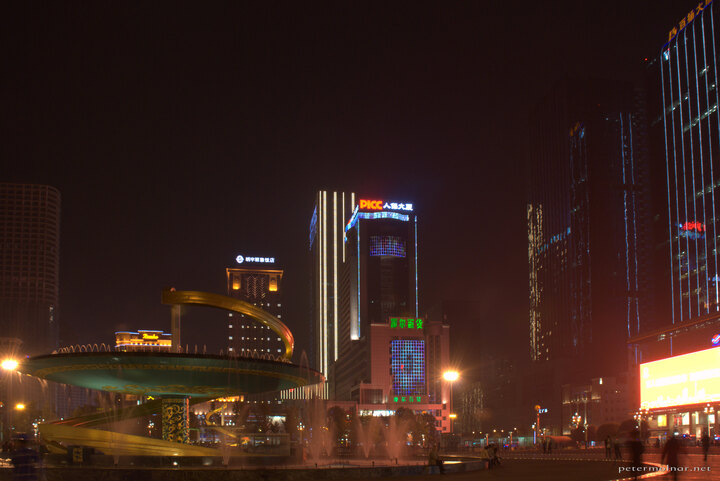
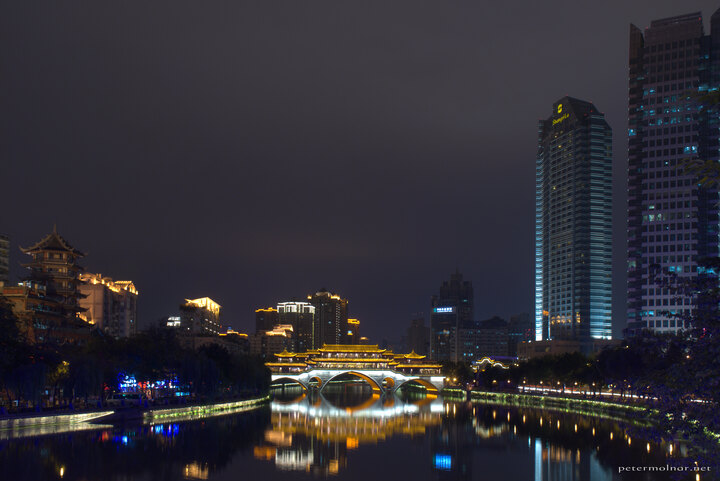
This city is very easy to like. Not really to love it, but to like it: it looks liveable, people seems to be happy and there's always something going on. Not in the European way; not hidden, secret clubs and happenings but collectively, on the street. Like dancing in the People's Park, for free, together.
Chengdu Research Base of Giant Panda Breeding2
Chengdu is one of the very few places in the world with a Giant Panda research centre. Yes, they have pandas. Adults, cubs, babies, and red pandas as well.
The place itself is beautiful, it's approximately 20km from the city centre - meaning the taxi should not cost more, than 50¥, so don't accept the 80¥ ride like we did. There are lots of bamboos inside, with nice paths and a lot of space for the pandas. And pandas.
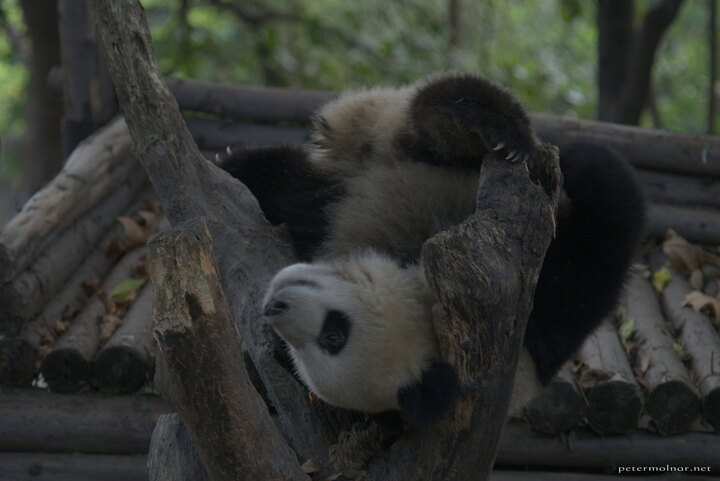
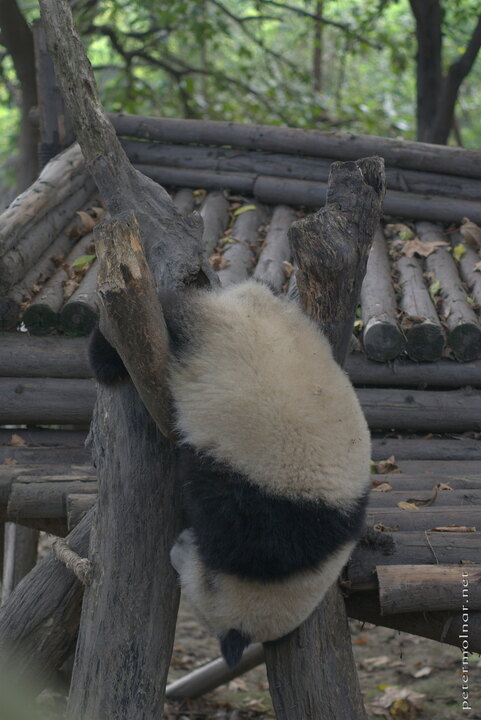
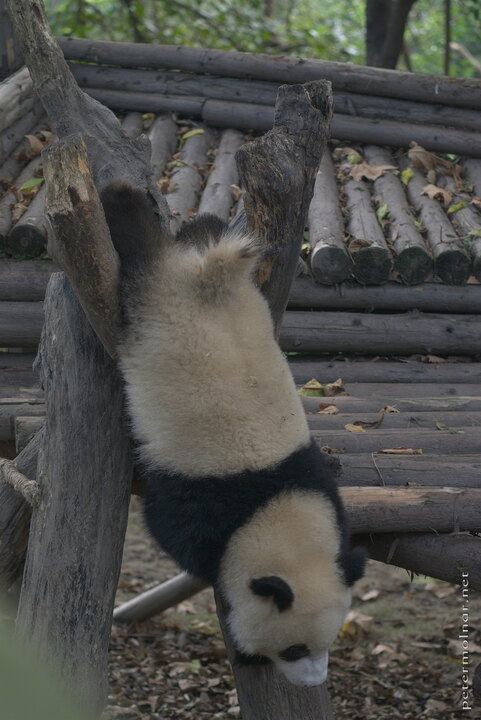
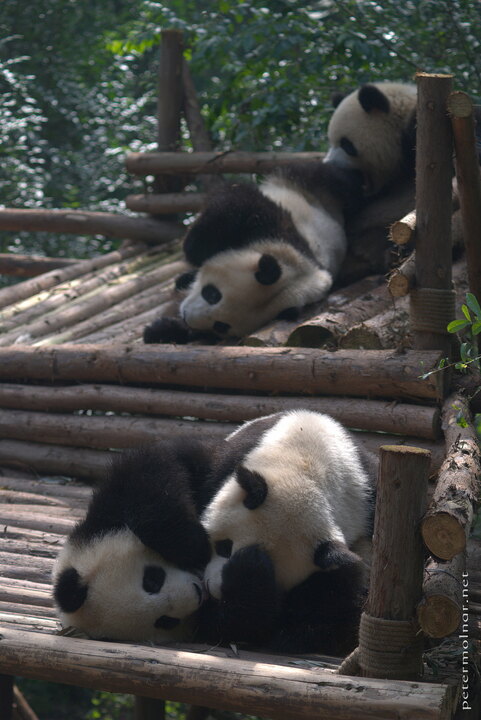
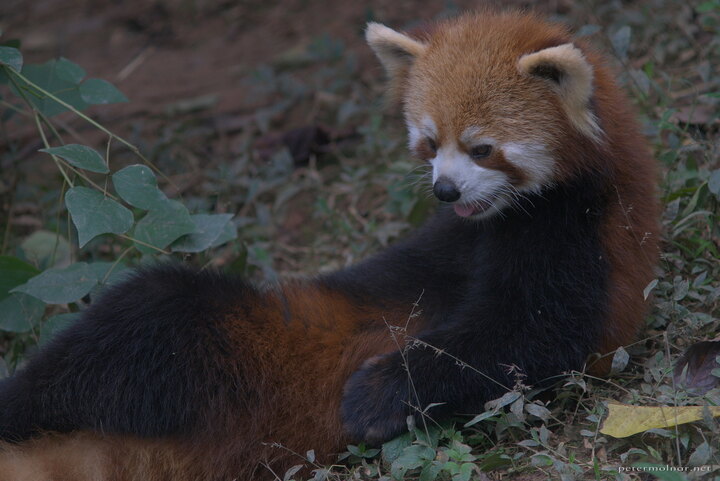
One adult was called by its keeper for food; when he got it, he sat down, put the food on his belly and ate if from there - he managed to eat without raising a hand. I've never seen any creature being this lazy.
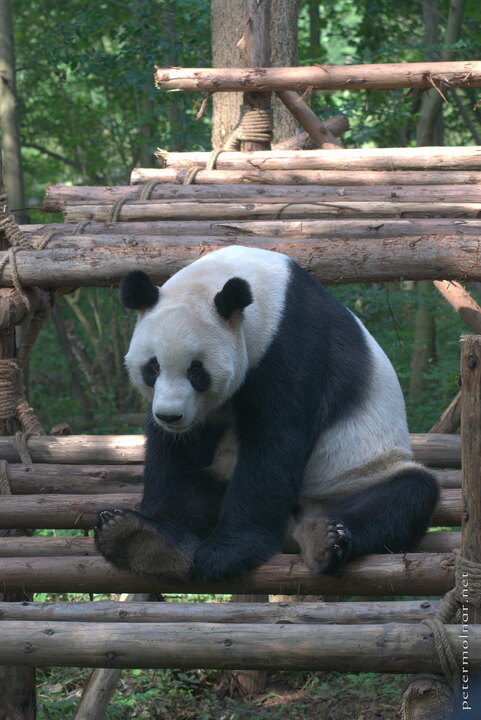
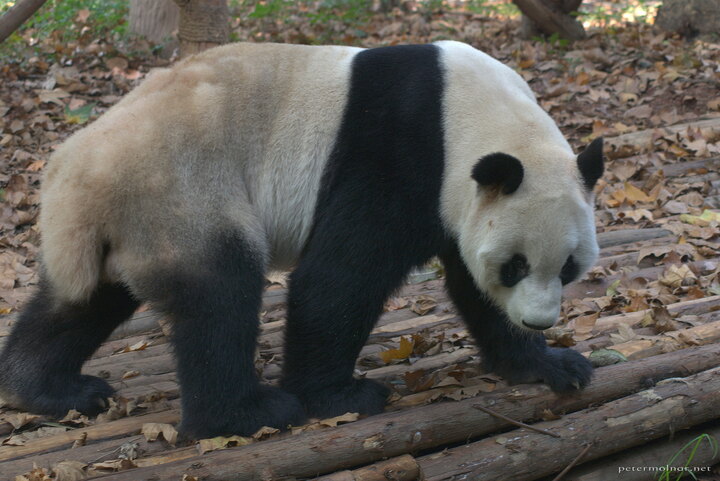
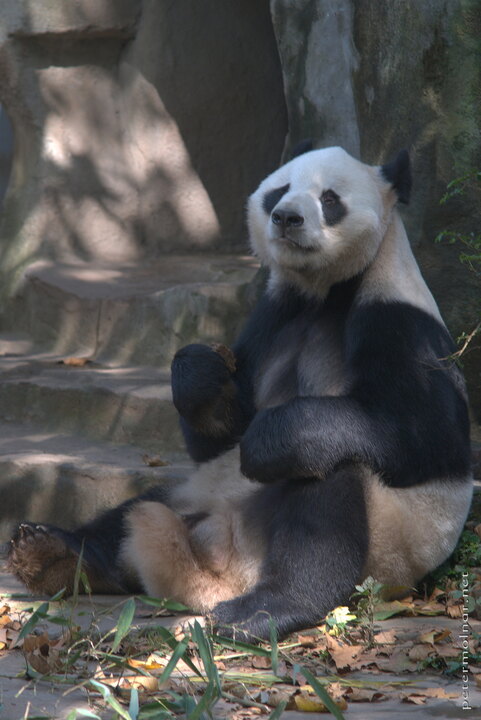
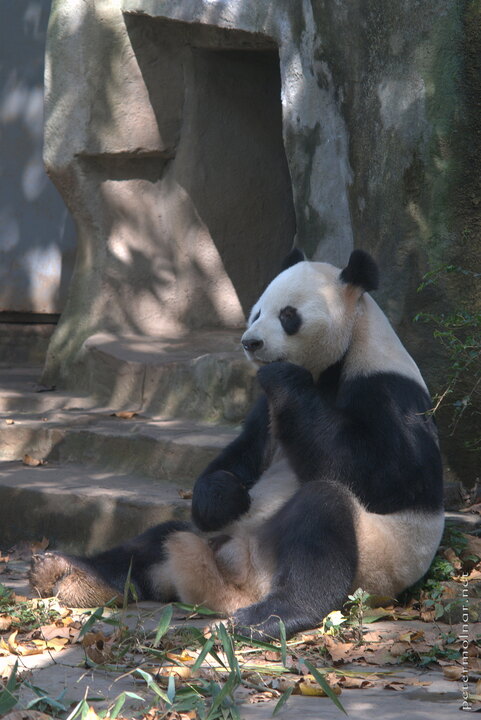
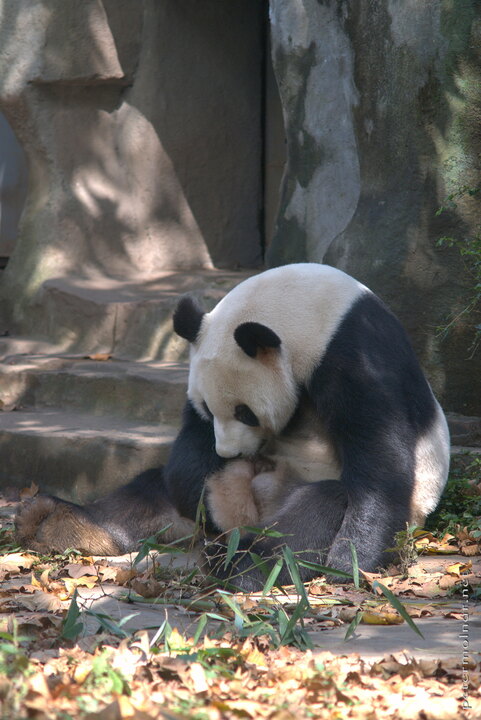
Wenshu Fang
Wenshu Fang is an ancient-ish part of Chengdu. Some buildings are original, but all look very authentic, giving you the experience of the "romantic" Chinese era. There are lots and lots of traditional art shops, with hand crafted souvenirs, restaurants, tea houses - all you might expect from a place like this.
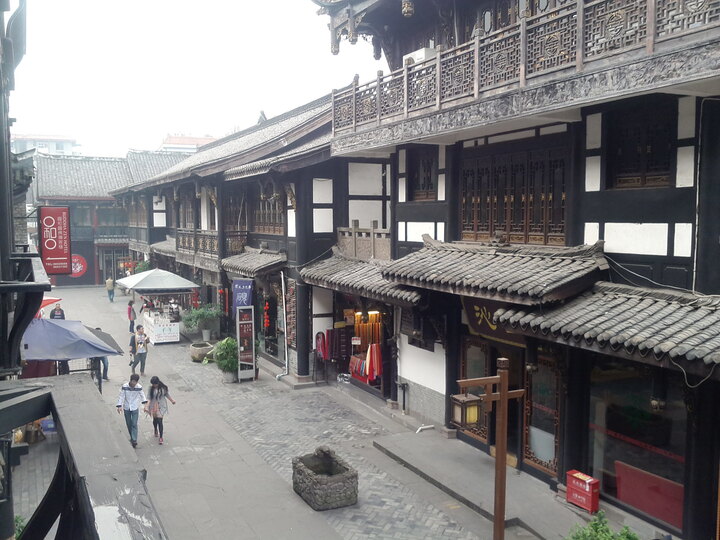
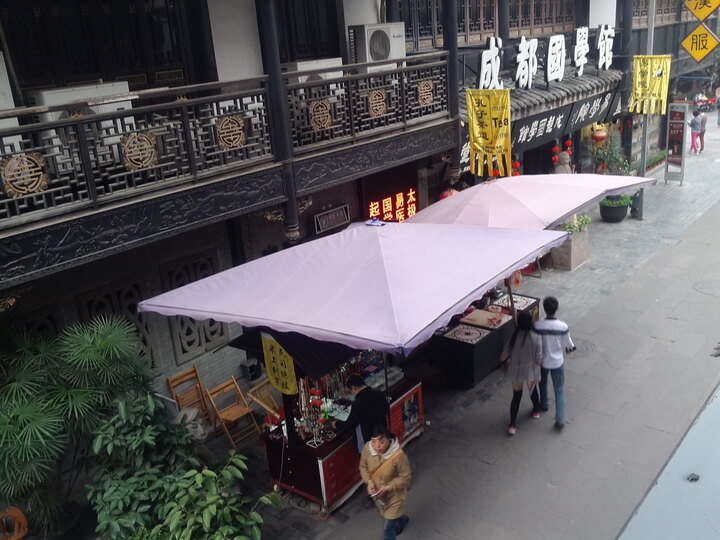
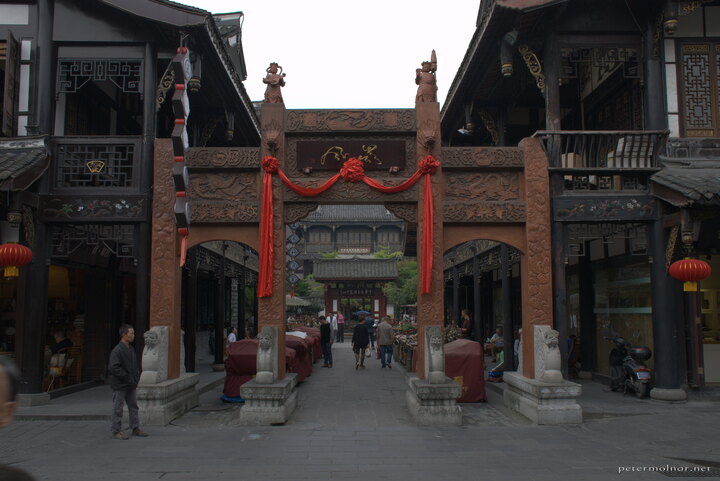
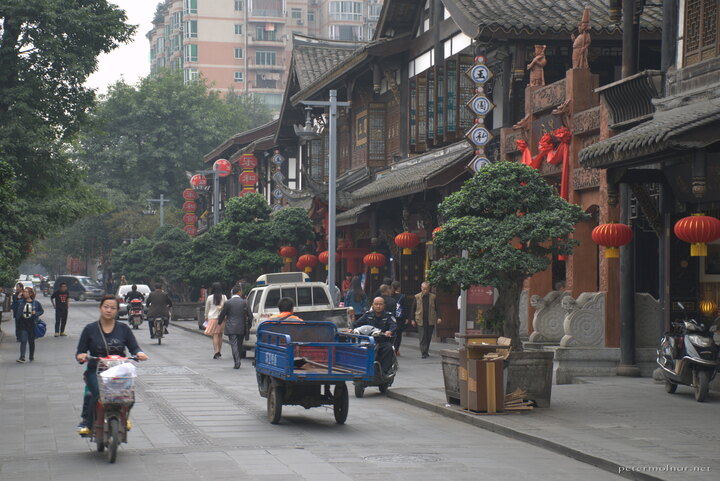
Right at the centre of this quarter there is a hotel, the Buddha Zen Hotel3, which is usually heavily booked. Even if you can't book a room, they have a traditional spa: wooden baths ( covered with a thin, plastic sheet for hygienic reasons ) with herb water and Chinese massage that can do miracles to your tired body. Their food is also great.
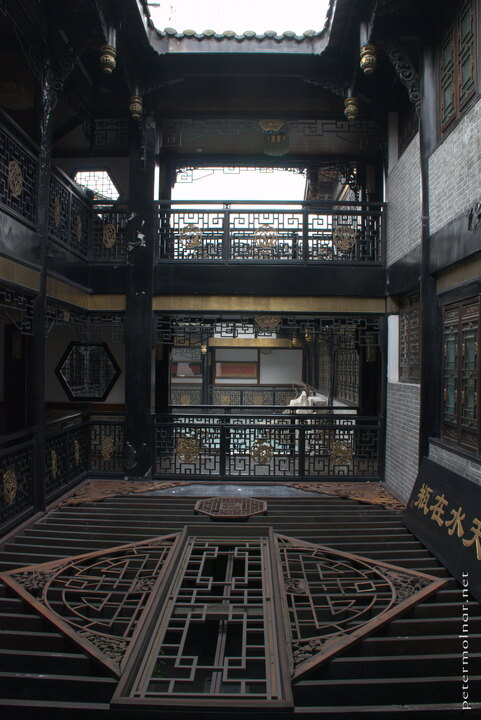
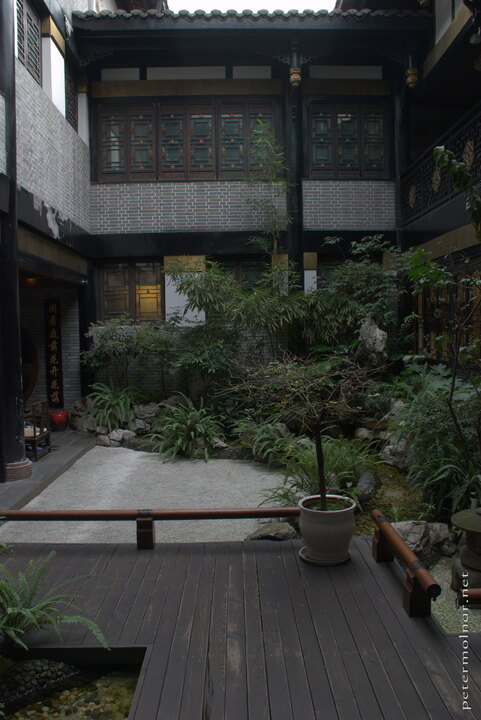
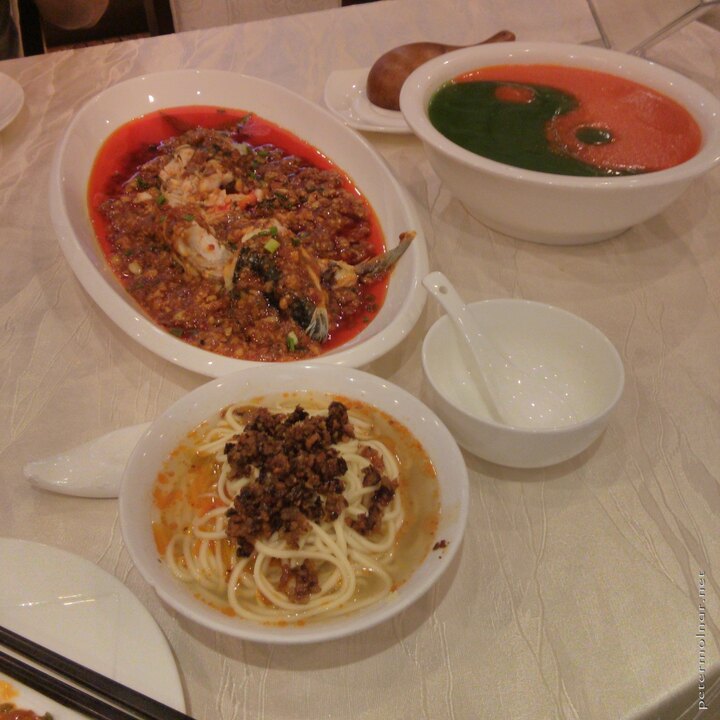
On our last day we revisited this area to buy some brushes for Nora. We found a little alley we have not seen before and a calligraphy shop with a lovely storekeeper. From out of nowhere he asked us ( he used his computer to translate ) if we'd drink a tea with him - we accepted. He then guided us through an hour of tea tasting with lovely, tiny pots and cups, getting the tea out of the safe (!) and even giving us a bit of the best tea he had as a gift. We learned that there are significant differences between spring, summer and autumn tea and the one we got the gift from was the mixture of these three: the Morning Breeze of the Mountain.
Wenshu Monastery4
This place is a working Buddhist Temple. Right after you step through its gates, the noise of the city disappears and the only sound left is: birds tweeting. It's one of the most peaceful, most beautiful places we've seen so far.
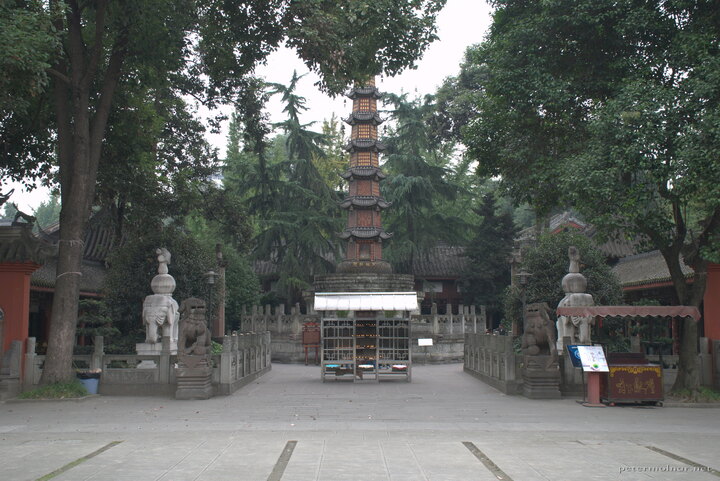
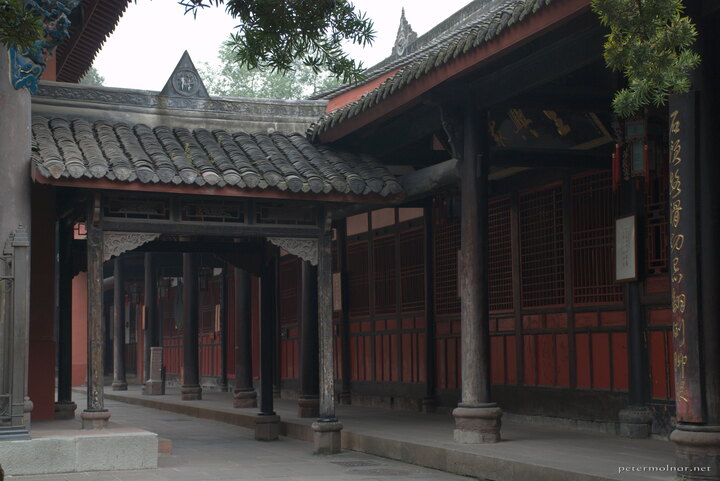
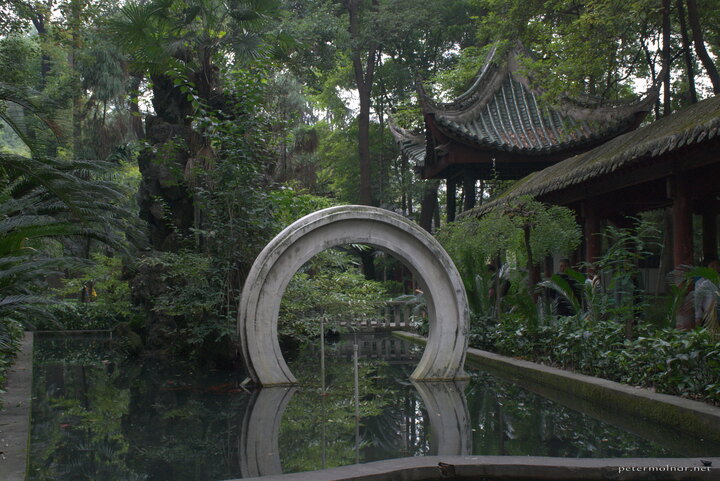
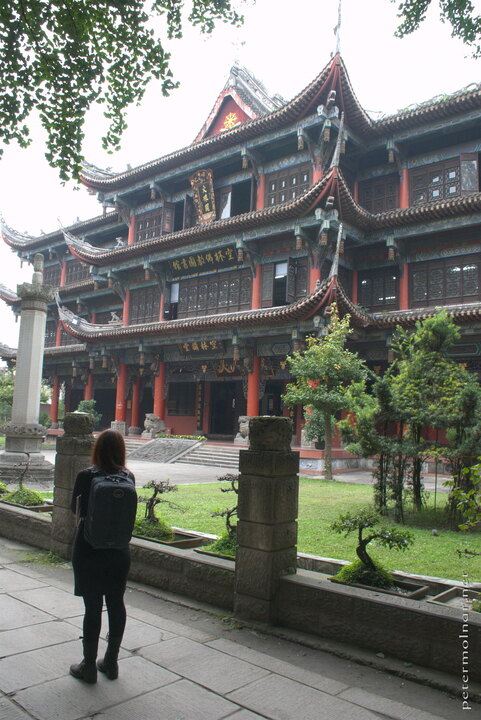
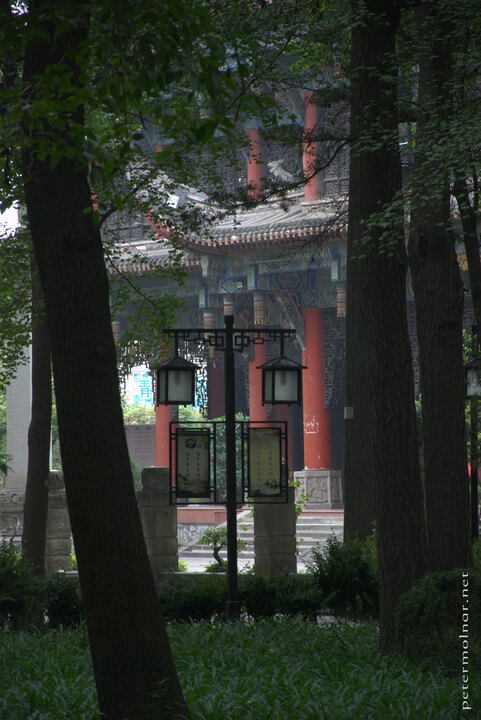
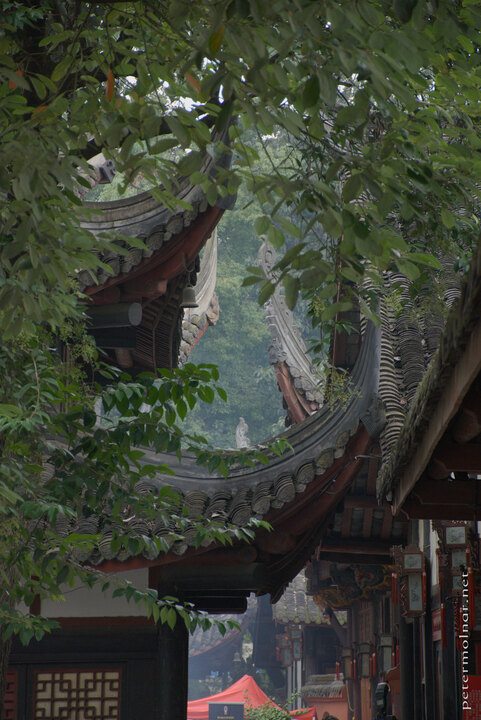
Qingyang Taoist Temple5
On day 3, we wanted a light day, so the only place we visited is a large, Taoist temple. Surprisingly it is very far from the regular, European meaning of a temple; it's rather a small, ancient town. It's a nice place and has a special feeling and if you keep your eyes open you'll realize there is a temple for every zodiac in the Chinese astrology.
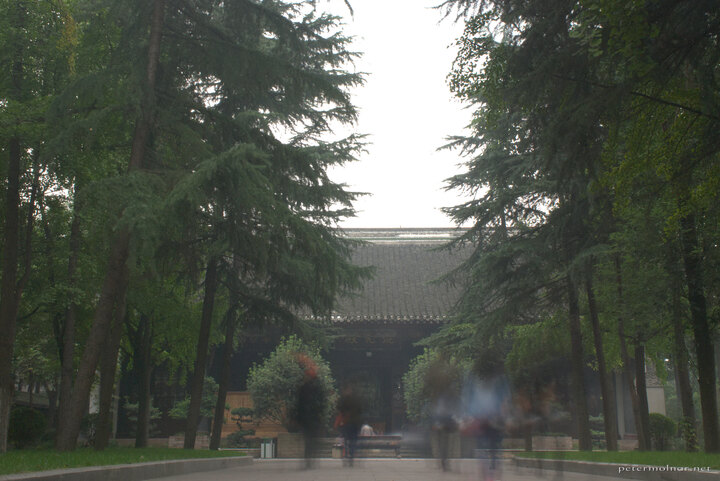
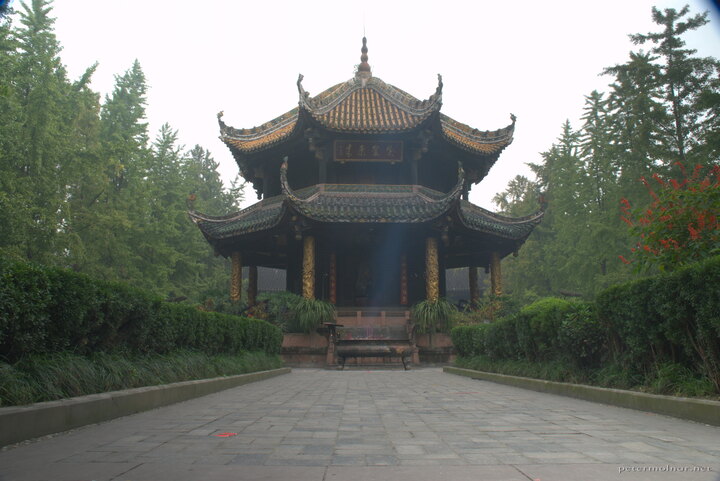
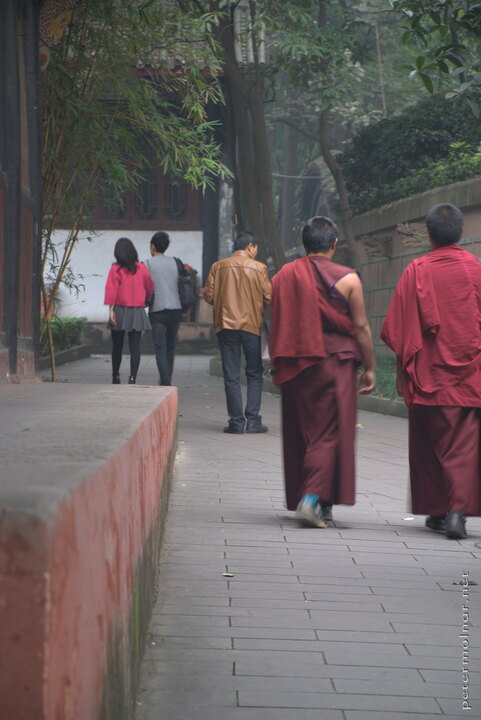
To be honest, we fell asleep this afternoon; jet-lag will eventually kick in.
Wide and Narrow Alley6
Apart from Wenshu Fang, there are some other revived antique parts of Chengdu, including the Wide and Narrow alleys. The tourist density is much higher here than in Wenshu, but it's still a nice place. There are plenty of street-food-snack sellers and it's quite nice.
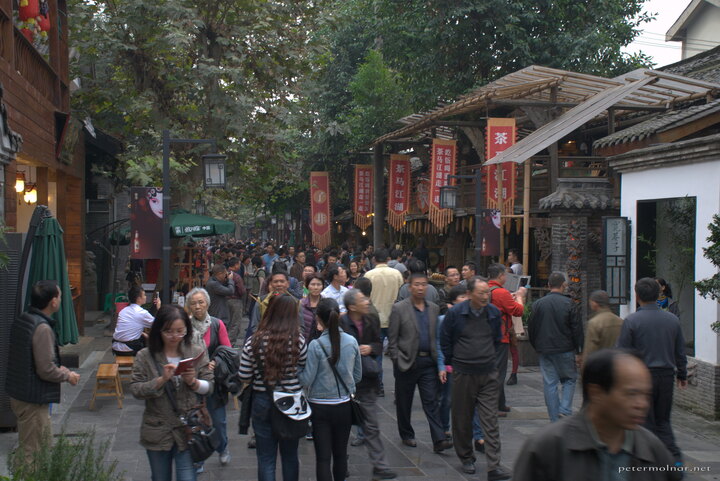
There is a big, wide road ( Qintai Road ) very close to this area with very expensive restaurants and Sichuan Opera places and with some extremely expensive but interesting art pieces.
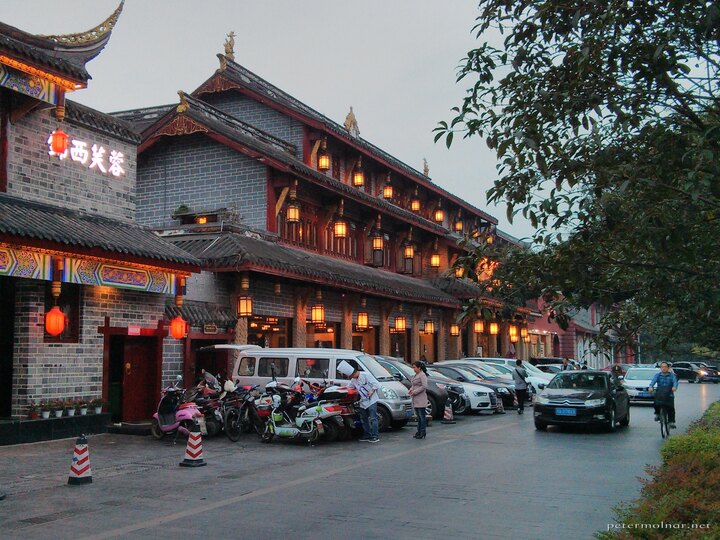
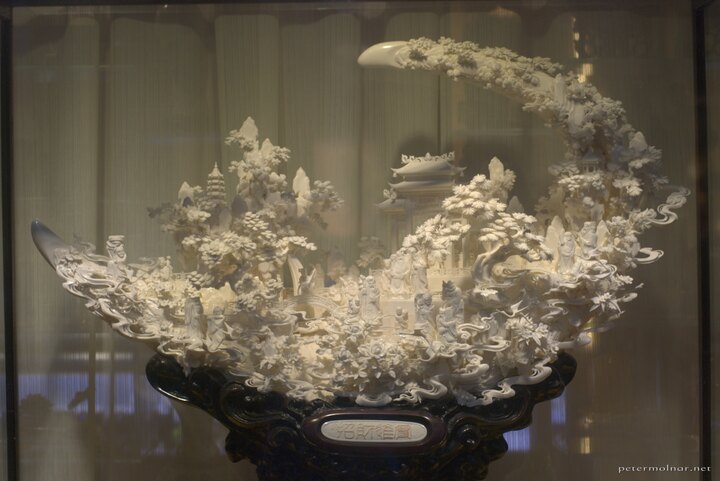
Hot Pot with mini Sichuan Opera
Nora wanted to visit an Opera, but to be honest, I was a bit afraid of potentially hurting, high-pitched singing. Accidentally we learned that many of the hot-pot places ( which we also wanted to try ) offer and additional, mini-opera with the meal - and the whole thing was 75¥ per person! The opera is not what I was expecting: it's a mixture of different, short plays, including: singing, musical instruments, dancing, fight-like plays, a special tea "ceremony", where the teapot is used just like a sword and a bit of the world-famous Sichuan face changing7. The hot pot is a bowl of spicy, empty soup with a lot of raw food around it ( offal, vegetables, lotus root, etc. ). You have to brew it according to your own taste, right in front of yourself while enjoying the play in the back.
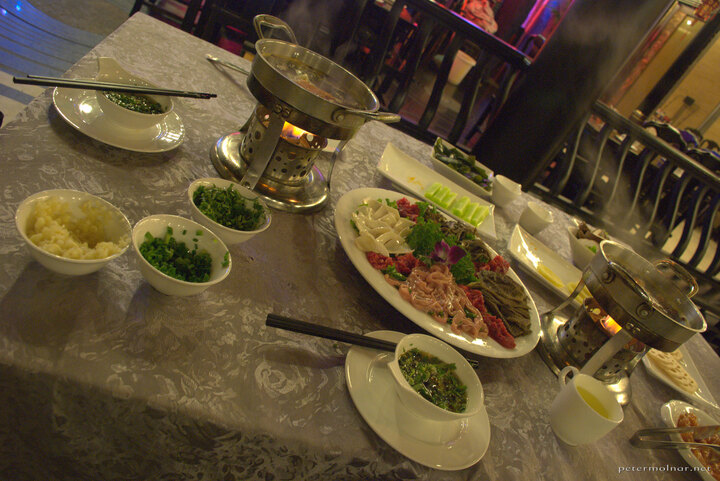
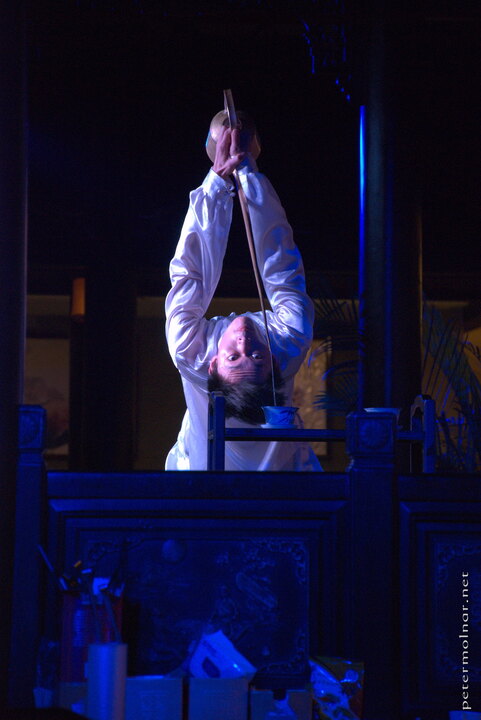
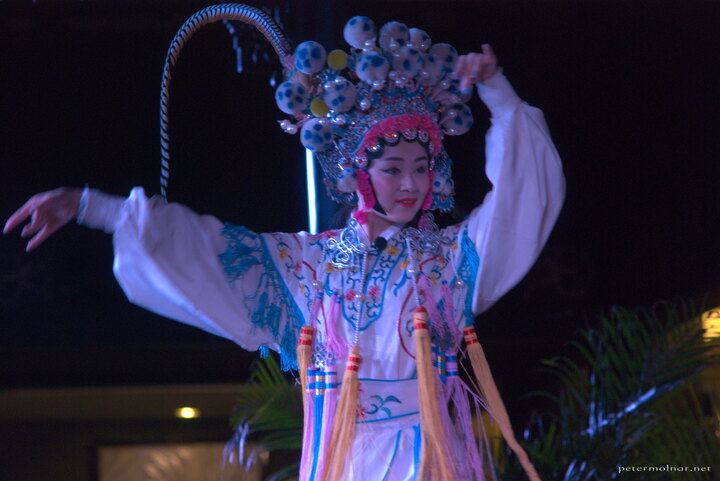
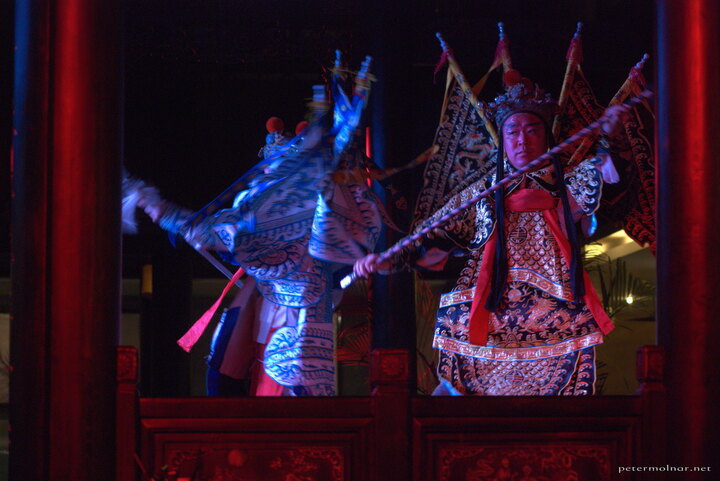
The man playing the violin-like instrument played tones that again reminded us some Hungarian tones.
Footnotes
Language
The are very, very, very few people speaking English. We met a few in Rhombus Fantasia Hotel8 who spoke nearly fluent English, but do not expect it at all.
Bring a smartphone or a tablet with Google Translate9 and Simplified Chinese offline package10. We did not know that the Simplified is the official and many of those we met had trouble reading Traditional. Privacy fighters: Google Translate app does not need the Google Framework or Play Store or a Google account.
In case they want to reply, they will grab their smartphones and go online for a translator app :)
Taxies
If possible, always take the official taxies - white-green in Chengdu, and white-blue in Jiuzhaigou - because the work on actual distance bases. 2014 October prices: 8¥ base price including 2km, 1.90¥/km after.
If this is not possible, you have to bargain. They will always say a bit
- sometimes much - more than they should, depending on the place you're trying to get the taxi at. Once you agreed on the price, you cannot change it. Tipping is optional, but very appreciated. Don't expect receipt.
Don't accept bargains within Chengdu unless there is no other option at all - this includes the airport and the Panda Research Center. If you pay by km it will be better for you.
Bargain example: they ask for 100¥: offer 80¥; they will accept it and everyone is happy. Do not over-bargain; they will not take you.
Food
The food is great, but do follow one important rule: follow your nose. If it smells good, it's good.
How to get coffee?
There are a few Starbucks and McDonald's' around, otherwise coffee is extremely rare and surprisingly expensive. There is hope though: at the bottom of Somerset Riverside Hotel11 there is an authentic Dutch coffee house, named Maan's Coffee. You can also get some waffles with ice-cream here ;)
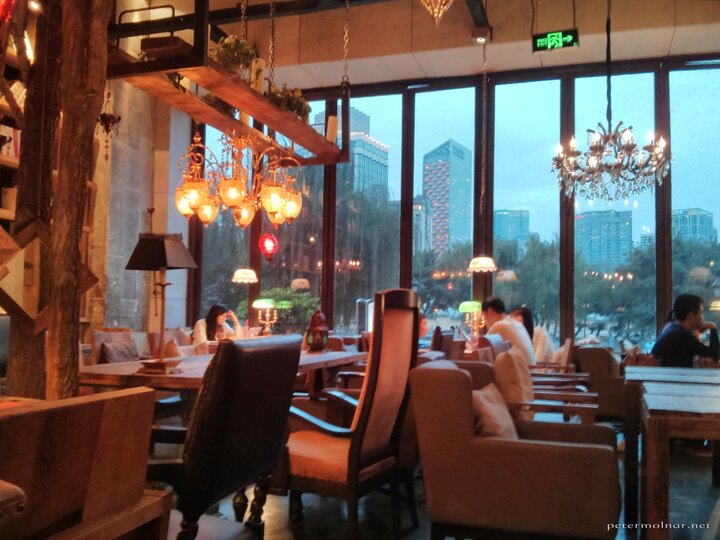
Computer City12
There is a junction with some massive buildings filled with any kind of computing and photography related electronics. It's very different from the European stores.
Beer and nightlife
At the foot of Anshun Bridge there are lots of small clubs; many of them offer live music and import drinks. They are expensive. A small bottle of Heineken was priced 200¥. ( Yes, you read it right, it's approximately £20 ).
The police
When we arrived back from Jiuzhaigou a photographers backpack was left at the point we got off the bus. Taking some photos ourselves we understood how hurting it would be to loose our bags, so we decided to take it to the bus station, to the lost luggage section. Since we had no idea what to actually do with it - and to avoid any potential trouble - we approached two police officer and showed our tablet with the translation of what happened. For our big surprise, one of them switched to a perfect English and told us that he's a traffic officer, but he can show us where to go and drop the bag off at. He was very polite and looked very happy that we turned the backpack in. He was also impressively tall compared to the locals.
http://www.travelchinaguide.com/attraction/sichuan/chengdu/panda-breeding-and-research-center.htm↩︎
http://www.booking.com/hotel/cn/chengdu-buddhazen.en-us.html↩︎
http://www.travelchinaguide.com/attraction/sichuan/chengdu/qingyang.htm↩︎
http://www.travelchinaguide.com/attraction/sichuan/chengdu/wide-narrow-alley.htm↩︎
http://esk1989.store.aptoide.com/app/market/com.google.android.apps.translate/30000305/7392982/Google%20Translate↩︎
http://www.cnet.com/uk/how-to/use-google-translate-offline-by-downloading-language-packs/↩︎
https://www.booking.com/hotel/cn/somerset-riverview-chengdu.en-gb.html↩︎
http://www.chinatouronline.com/china-travel/chengdu/chengdu-shopping/Computer-City_1000596.html↩︎
(Oh, by the way: this entry was written by Peter Molnar, and originally posted on petermolnar dot net.)